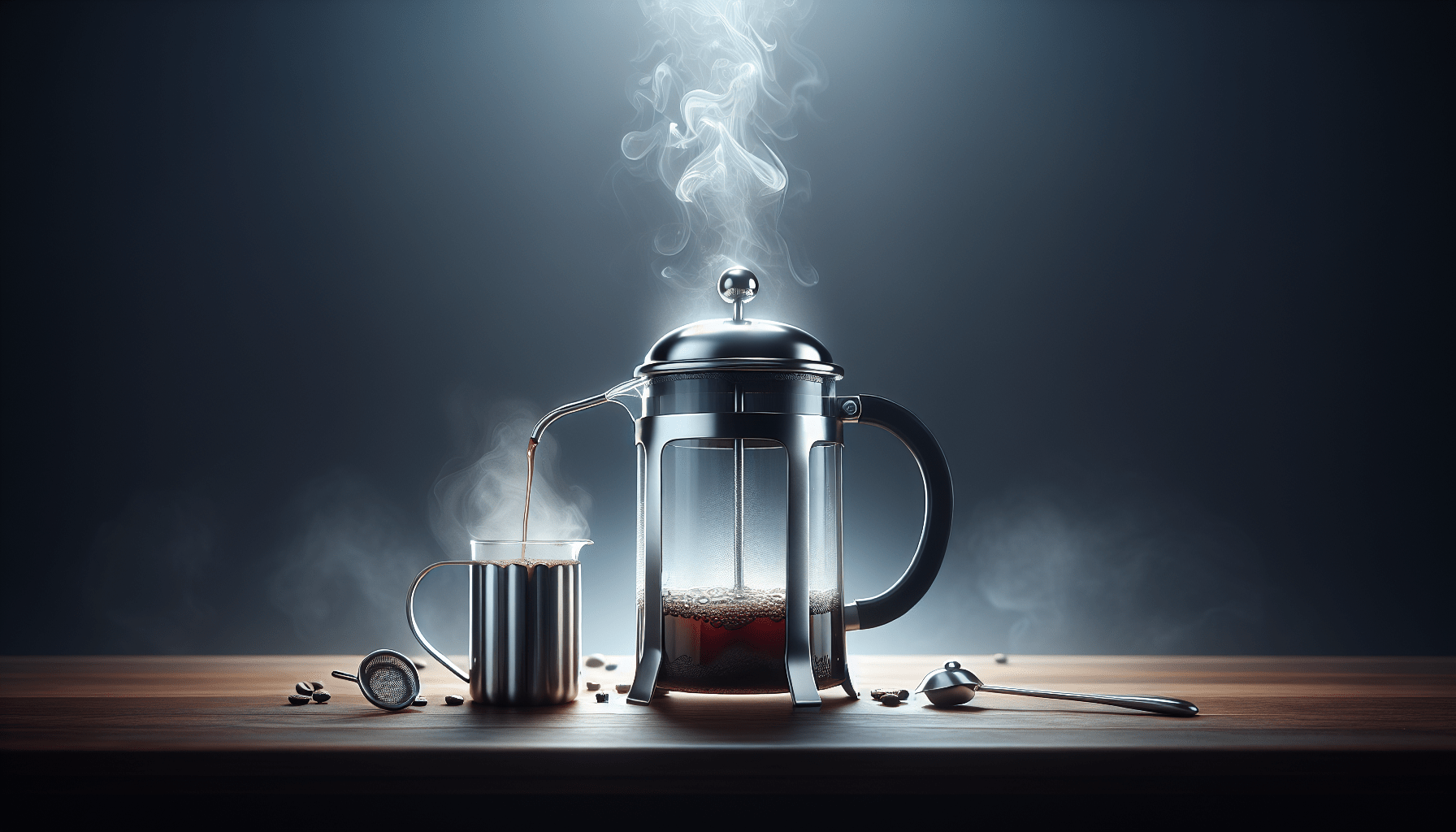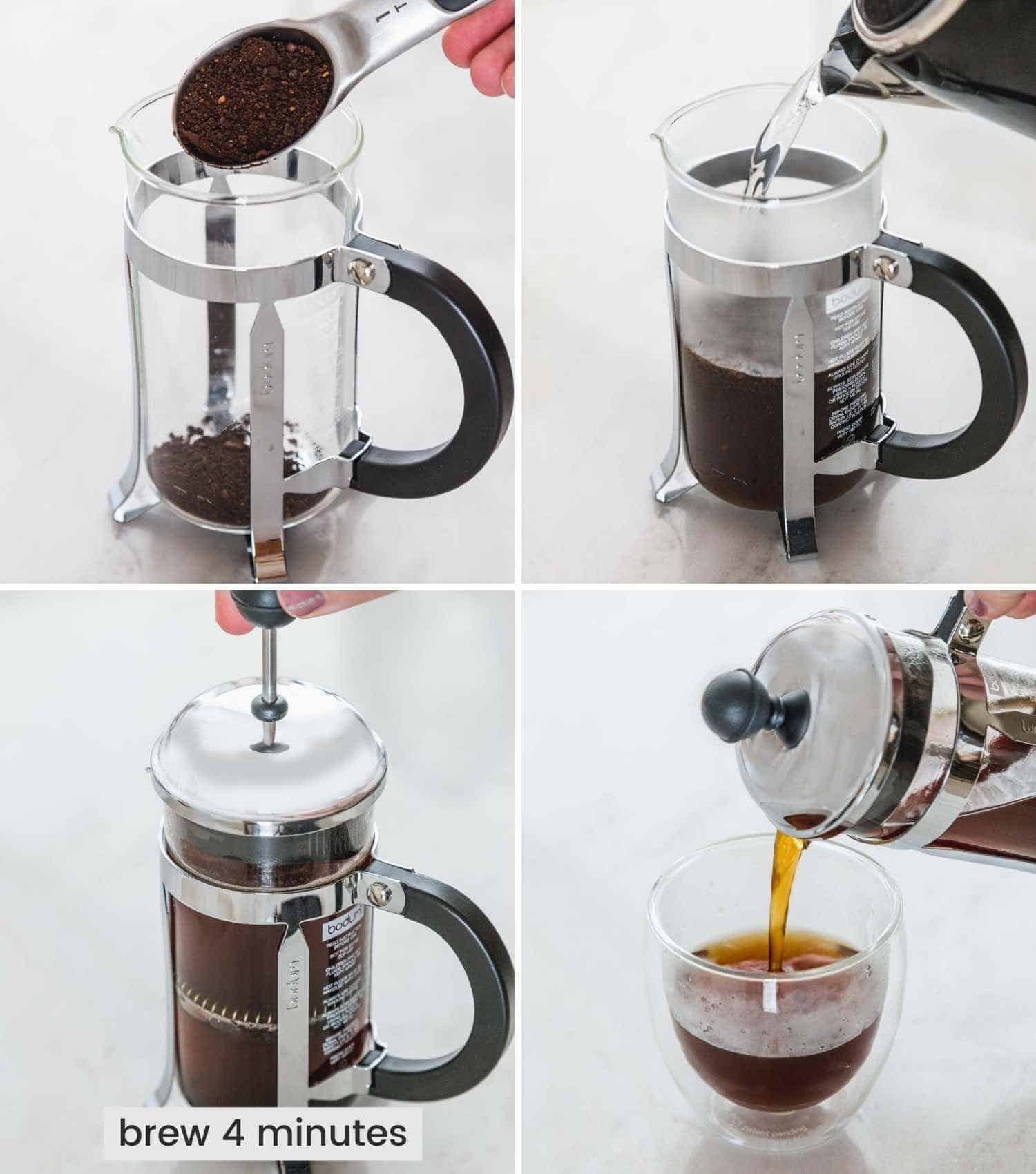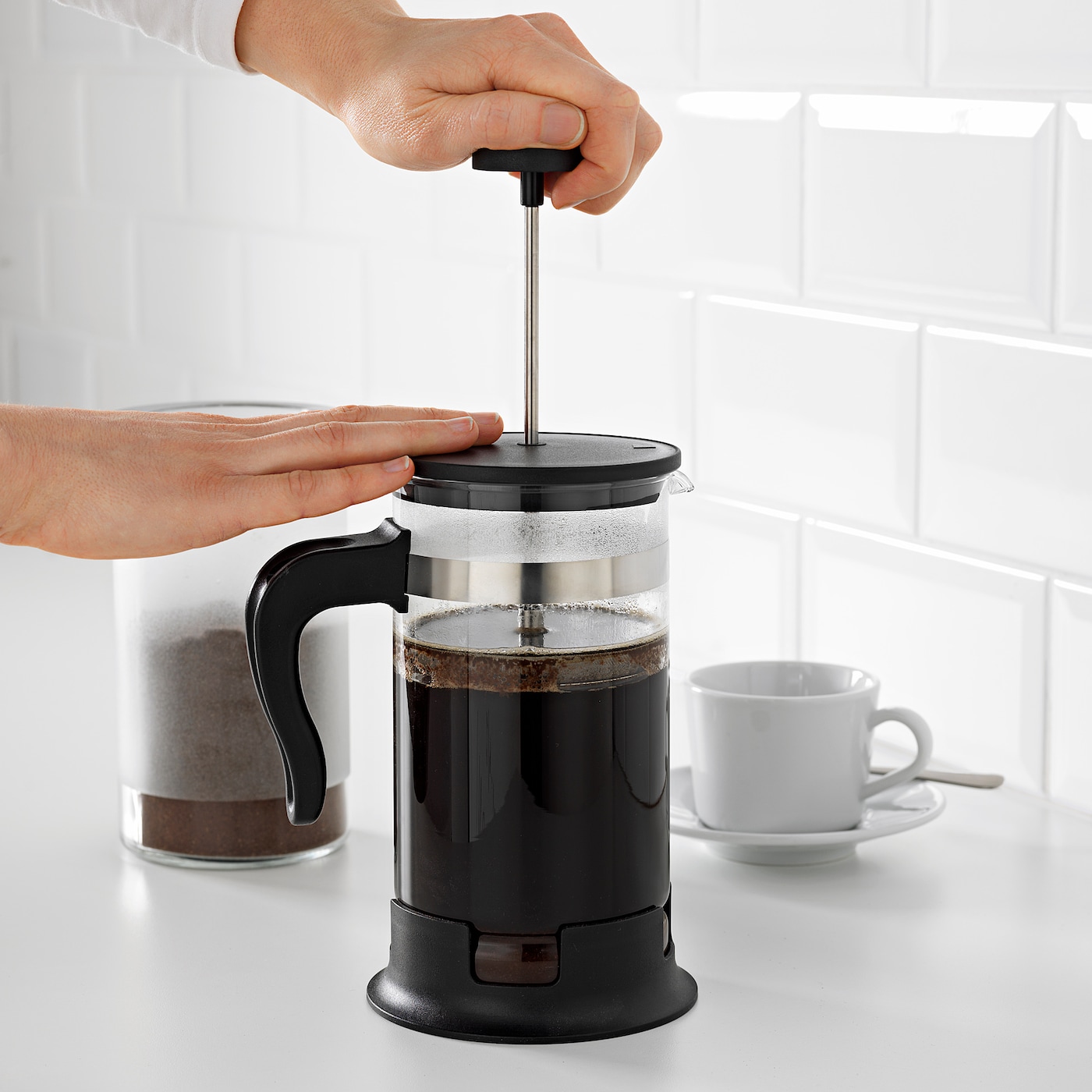Imagine waking up to the rich aroma of fresh coffee in the morning. Your taste buds tingle with anticipation as you reach for your trusty French press. But have you ever wondered how this magical device works its wonders? Designed with simplicity and efficiency in mind, a French press is a brewing method that captures the essence of your favorite coffee beans. It harnesses the power of water, heat, and pressure to extract the full flavors and essential oils, resulting in a brew that is consistently bold and full-bodied. So, let’s take a closer look at what goes on behind the scenes of this beloved coffee-making technique.
What is a French Press?
A French Press, also known as a press pot or plunger pot, is a popular manual coffee brewing device. It consists of a carafe, a plunger, a filter, a lid, and a handle. This simple yet efficient tool allows you to brew a strong and flavorful cup of coffee with ease.
Definition
A French Press is a type of coffee maker that uses a full immersion brewing method to extract the flavors from coffee grounds. It relies on the steeping and immersion of coarsely ground coffee beans in hot water to create a rich and bold cup of coffee.
History
The French Press was invented by the Italian designer, Attilio Calimani, in 1929. While its origins are Italian, it gained popularity in France and the name “French Press” became widely used. Over the years, the French Press has become a beloved coffee brewing method around the world.
Components of a French Press
To understand how a French Press works, it is essential to know the key components of this brewing device.
Carafe
The carafe is the main body of the French Press, usually made of glass or stainless steel. It holds the coffee grounds and hot water during the brewing process.
Plunger
The plunger is a metal or plastic rod attached to a mesh filter. It is used to separate the brewed coffee from the grounds. The plunger is pressed down, pushing the grounds to the bottom while allowing the brewed coffee to rise to the top.
Filter
The filter is a fine mesh screen attached to the bottom of the plunger. It prevents the coffee grounds from entering the brewed coffee while allowing the flavorful oils and particles to pass through.
Lid
The lid fits securely onto the carafe, helping to retain heat during the brewing process. Some lids also feature a pouring spout for easy serving.
Handle
The handle provides a comfortable grip for pouring and pressing the plunger. It is usually made of heat-resistant material to ensure safe handling.
How to Use a French Press
Using a French Press may seem intimidating at first, but it is a simple and straightforward process. Here is a step-by-step guide on how to use a French Press to brew delicious coffee:
Step 1: Boil water
Begin by boiling fresh, cold water. The optimal water temperature for brewing coffee with a French Press is around 195 to 205 degrees Fahrenheit (90 to 96 degrees Celsius).
Step 2: Grind coffee beans
Next, grind your coffee beans to a coarse consistency. The ideal grind size for French Press brewing is slightly larger than what you would use for drip coffee makers.
Step 3: Preheat the French Press
To ensure optimal coffee extraction, preheat the French Press by filling it with hot water and letting it sit for a minute or two. Then, discard the water.
Step 4: Add coffee grounds
Add the freshly ground coffee to the French Press. The general guideline is to use one tablespoon of coffee grounds for every 4 ounces of water, but you can adjust the ratio to suit your taste preferences.
Step 5: Pour hot water
Carefully pour the hot water over the coffee grounds, making sure to saturate all of them. Start by pouring a small amount of water to bloom the coffee, allowing it to release its flavors.
Step 6: Stir and steep
Give the coffee and water mixture a gentle stir to ensure that all the grounds are fully immersed. Place the lid on the French Press to retain heat and let the coffee steep for about four minutes. Adjust the steeping time based on your desired strength.
Step 7: Press the plunger
After the desired steeping time, slowly press down on the plunger, applying even pressure. This will separate the brewed coffee from the grounds. Take your time during this process to avoid any accidental spills.
Step 8: Serve and enjoy
Once the plunger is fully pressed down, the brewed coffee is ready to be served. Pour the coffee into your favorite mug or cups, and savor the rich aroma and flavors of your freshly brewed French Press coffee.
The Science and Mechanics Behind
Although the French Press may seem like a simple device, there is some science and mechanics that contribute to its unique brewing process. Understanding these factors can help you achieve the best possible cup of coffee.
Water temperature
The water temperature plays a crucial role in coffee extraction. Water that is too hot can result in over-extraction, producing a bitter taste, while water that is too cold may not extract enough flavor. The optimal range for French Press brewing is between 195 to 205 degrees Fahrenheit (90 to 96 degrees Celsius).
Coffee-to-water ratio
Finding the right coffee-to-water ratio is key to achieving a balanced and flavorful cup of coffee. The general guideline is to use one tablespoon of coffee grounds for every 4 ounces of water. However, you can adjust this ratio to suit your personal taste preferences.
Extraction process
The extraction process in a French Press combines steeping and full immersion brewing. The coffee grounds are fully exposed to hot water, allowing the flavors and aromatic oils to be extracted. The longer the steeping time, the stronger and richer the coffee will be.
Steeping time
The recommended steeping time for French Press brewing is around four minutes. However, you can experiment with shorter or longer steeping times to achieve your desired strength and flavor profile. Keep in mind that longer steeping times can result in a more robust and intense cup of coffee.
Filtering process
The French Press utilizes a metal mesh filter to separate the brewed coffee from the grounds. This filter allows the flavorful oils and fine particles to pass through, resulting in a fuller-bodied and richer cup of coffee. However, it also allows some sediment to remain in the coffee, which some people may find undesirable.
Benefits of Using a French Press
Using a French Press to brew your coffee offers several advantages that contribute to a superior coffee drinking experience.
Bold and full-bodied flavor
The French Press brewing method allows for maximum flavor extraction from the coffee grounds. This results in a rich, full-bodied cup of coffee with robust flavors and aromatic oils.
Control over brewing variables
With a French Press, you have complete control over various brewing variables, such as water temperature, coffee-to-water ratio, and steeping time. This level of control allows you to customize your coffee to suit your taste preferences precisely.
No need for paper filters
Unlike other brewing methods that require disposable paper filters, the French Press uses a reusable metal mesh filter. This eliminates the need for paper filters and reduces waste, making it an environmentally-friendly choice.
Simple and portable design
The French Press’s simple and portable design makes it an excellent choice for home brewing or traveling. It is compact, lightweight, and easy to use, making it a versatile tool for coffee lovers on the go.
Potential Drawbacks of French Press
While the French Press offers many advantages, there are a few potential drawbacks to consider before incorporating it into your coffee routine.
Sediment in the coffee
One common issue with French Press brewing is the presence of some sediment in the final cup of coffee. The metal mesh filter allows some fine coffee particles to pass through, resulting in a slightly gritty texture. However, this can be minimized by using a coarser grind size and allowing the coffee to settle after pressing the plunger.
Requires coarse grind
To achieve optimal results with a French Press, you need to use a coarse grind size. Fine grinds can easily clog the mesh filter and make the brewing process challenging. If you primarily use pre-ground coffee, it may be necessary to purchase whole beans and invest in a grinder.
Limited serving size
Most standard-sized French Presses have a capacity of about 8 cups (32 ounces) of coffee. While this is suitable for individuals or small groups, it may not be sufficient for larger gatherings or households with multiple coffee drinkers. In such cases, multiple batches may be required.
Variations of French Press
Over the years, several variations of the French Press have emerged, each with its own unique features and benefits.
Double-walled French Press
A double-walled French Press features an additional layer of insulation. This design helps to keep the coffee hot for a more extended period, making it ideal for those who prefer to savor their coffee slowly.
Insulated French Press
Similar to the double-walled version, an insulated French Press is designed to retain heat effectively. It is often made of stainless steel with vacuum insulation, ensuring that your coffee stays hot for an extended period.
Travel-friendly French Press
As the name suggests, a travel-friendly French Press is compact, lightweight, and designed for on-the-go brewing. It often features a durable outer shell and a built-in cup, making it convenient for camping, hiking, or any other adventure.
Electric French Press
For those who prefer the convenience of an electric appliance, an electric French Press offers an automated brewing process. It combines the simplicity of a traditional French Press with the convenience of an electric coffee maker.
Tips for a Better French Press Experience
To enhance your French Press brewing experience, here are a few tips that can help you achieve the best results:
Use freshly roasted coffee beans
For optimal flavor, use freshly roasted coffee beans. The beans should be ground just before brewing to preserve their aroma and taste. Avoid using stale or pre-ground coffee, as it may result in a lackluster cup.
Grind the coffee to the right consistency
Invest in a quality grinder and grind your coffee beans to a coarse consistency. Avoid grinding too fine, as it may lead to over-extraction and a bitter taste. Aim for a grind size slightly larger than what you would use for drip coffee makers.
Experiment with different brewing times
While the recommended steeping time is around four minutes, you can experiment with shorter or longer steeping times to find your desired strength and flavor profile. Adjusting the steeping time can significantly influence the overall taste of your coffee.
Try using a scale for precise measurements
To achieve consistent results, consider using a scale to measure both your coffee grounds and water. This ensures an accurate coffee-to-water ratio and allows you to replicate your preferred brewing parameters.
Caring and Maintaining Your French Press
Proper care and maintenance of your French Press can help prolong its lifespan and ensure a consistently great coffee brewing experience.
Regular cleaning
After each use, remove the used coffee grounds from the French Press and rinse it thoroughly with warm water. Avoid using harsh detergents or abrasive scrubbers that may damage the glass or stainless steel. Regular cleaning helps prevent the buildup of coffee residues and oils that can affect the taste of your coffee.
Disassembly for deep cleaning
From time to time, it is essential to disassemble your French Press for deep cleaning. This involves removing the plunger assembly and thoroughly cleaning each component separately. Refer to the manufacturer’s instructions for guidance on disassembling and reassembling your specific French Press model.
Avoiding metal fatigue
If your French Press has a metal plunger, handle it with care to avoid bending or warping the rod. Applying excessive force or using a dishwasher to clean the plunger can lead to metal fatigue and compromise the functionality of the French Press.
Durable storage
When not in use, store your French Press in a safe and dry place. Avoid placing any heavy objects on top of it to prevent accidental breakage. If you have a glass carafe, consider using a protective sleeve or wrap it in a towel to minimize the risk of damage.
Conclusion
The French Press is a versatile and user-friendly coffee brewing device that allows you to enjoy a rich and flavorful cup of coffee. Its simple design, coupled with the ability to control various brewing variables, offers a customizable coffee experience. Despite a few potential drawbacks, the French Press’s benefits, such as its full-bodied flavor and environmentally-friendly nature, make it a popular choice among coffee enthusiasts. By following proper care and maintenance practices, you can ensure a lasting and enjoyable French Press brewing experience. So grab your French Press, freshly roasted coffee beans, and start brewing to appreciate the rich coffee experience this wonderful tool has to offer.




